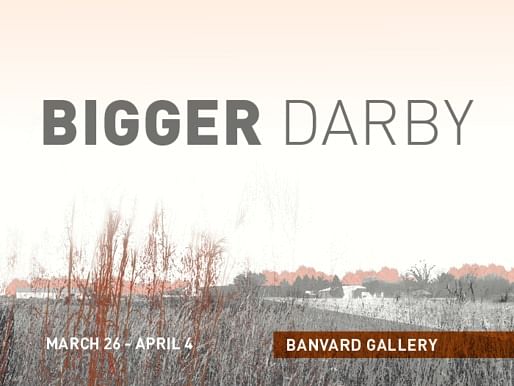

Abstract:
Bigger Darby is a land use proposal for the 84 square mile territory governed by Big Darby Accord in Central Ohio. The Big Darby Accord, adopted in the mid-2000s, unites public and private interests to improve watershed protection and provides a framework for future development. Developed by Sarah Cowles, Nick Glase, and the participants of the fourth-year landscape architecture studio at the Knowlton School, Bigger Darby is an alternative, landscape-based approach to contemporary watershed planning that enhances the vernacular landscapes of the Big Darby region, improves the health of the watershed, and provides new development opportunities.


Photo credit: Phil Arnold
Watershed planning addresses environmental issues such as flooding, habitat degradation, and water quality. Until recently, the adoption of watershed planning has been hampered by the fact that watersheds span multiple jurisdictions with conflicting regulations. Despite these challenges, today, more regions and municipalities are adopting watershed planning models to shape development and environmental goals. The Big Darby Accord watershed master plan, in typical fashion, advocates for tiered conservation strategies, acquisition of sensitive areas, enhancement of ecological zones, and the implementation of Best Management Practices, or BMPs. Critical to the economic feasibility of the plan is the development of Big Darby Town Center, a 5,000 unit mixed use urban-core that will generate required revenue to assist with habitat land acquisition. The Accord should be lauded for its progress; however, as a regional plan, it proposes only generalized solutions and may overlook opportunities to build within the region’s rich context of landscape, where elements such as hedgerows, fields, woodlots, and drainage systems have defined the texture, scale, and organization of the region.

Photo credit: Phil Arnold
Bigger Darby investigates complementary solutions for the Accord by more deeply examining the context of the site’s rich land-use patterns. Beginning with the simple act of creating ‘bigger’ edges between existing land uses, Bigger Darby speculates how small scale practices, such as rebuilding a ditch or country road, might lead to a broader spectrum of improvements such as improved water quality, habitat for wildlife, more productive farms, welcoming landscapes, a stronger sense of place, and a more cohesive regional identity.

Photo credit: Phil Arnold
Curated by Wesley Cogan, an editor of One:Twelve. Written by Sarah Cowles.
One:Twelve is an independent student publication at the Knowlton School of Architecture.
Check us out at onetwelveksa.com
This blog will be a feeder for recent news, events and student work occurring at the Knowlton School at The Ohio State University. Posts will typically center around updates from the school's lecture series, exciting projects from recent student reviews and updates from other school events.



1 Comment
Nice models.
Block this user
Are you sure you want to block this user and hide all related comments throughout the site?
Archinect
This is your first comment on Archinect. Your comment will be visible once approved.